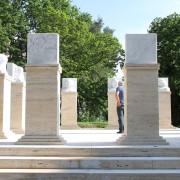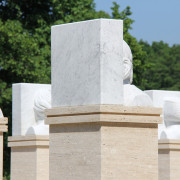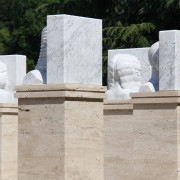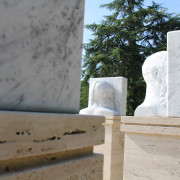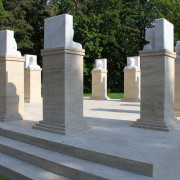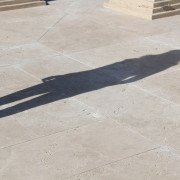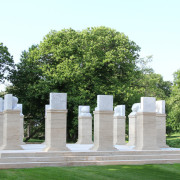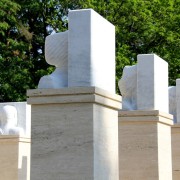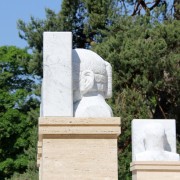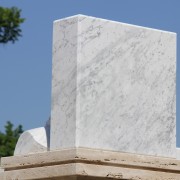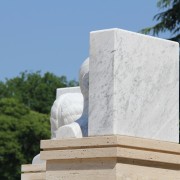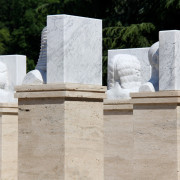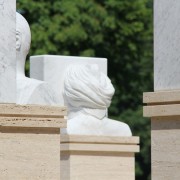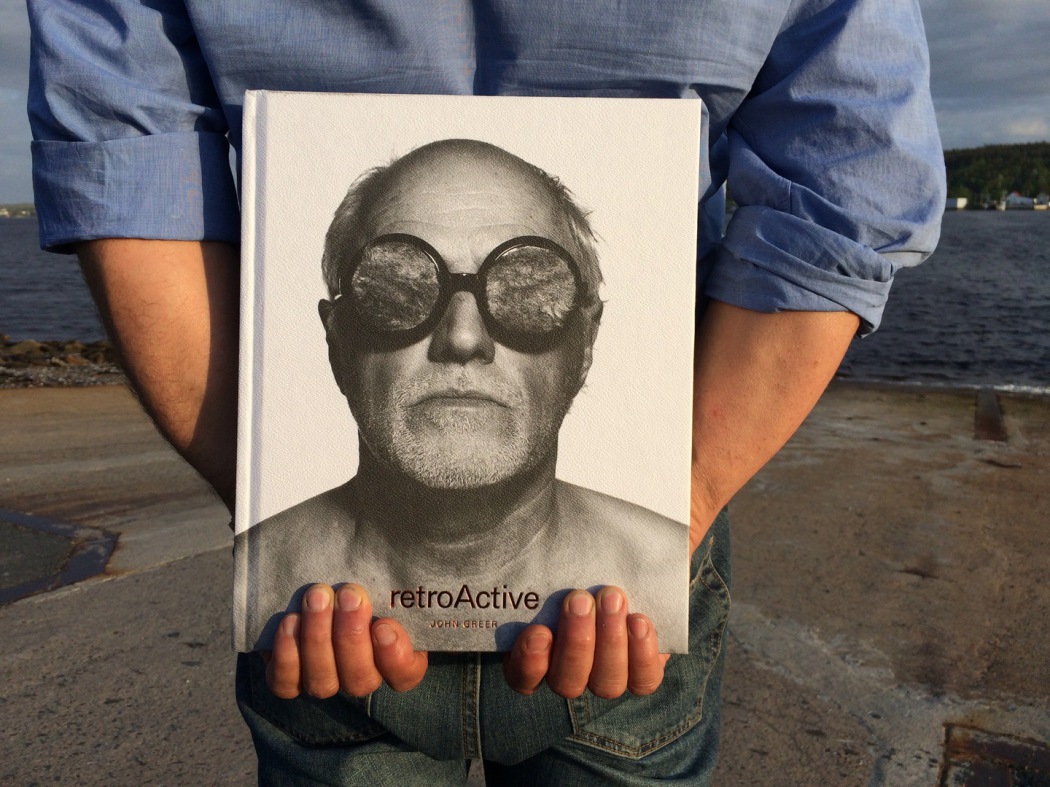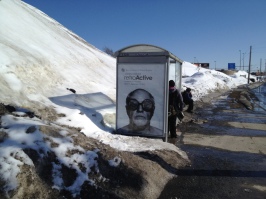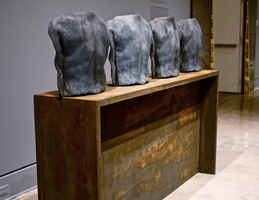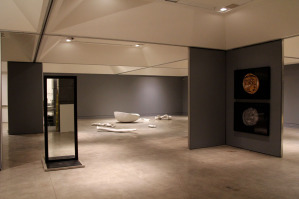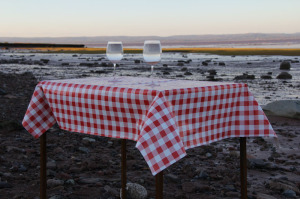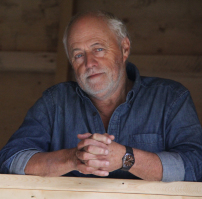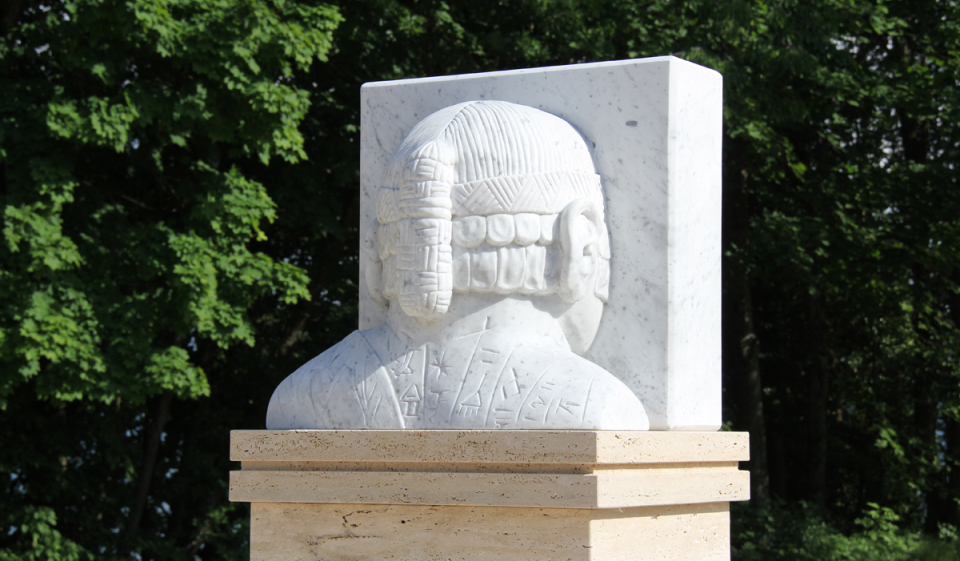
Cradle, 2012
Commissioned for a private collection in Switzerland;
Marble and Travertine, 33" x 33" (10m x 10m) stepped Piazza, 12 elements, each 36" x 32" x 84"
Please click on any individual image below for expanded view / slide show.
I began this work in 2002. At that time, I was reflecting on the roots of Western Civilization. Cradle, in a way, grew out of my work called “Civilization”, but I was more concerned with the
recent paradigm shift, post manned spaceflight; knowing that some humans have seen or witnessed the earth as an object from off of the planet.
For me this is such a fundamental shift of consciousness. We ourselves are thinking things, or, in other words, mysteriously animated matter, totally on and off the earth.
The shift of consciousness has the potential to open the human mind, in a way, to heal the philosophical mind-body split. The responsible position of the existential self is to be a humanist among
humans. It is a second chance to reflect on what and who we are.
To begin to know who we are we must look to our cultural past. So for me, that is Mesopotamia forward, unbroken until now.
“Cradle” takes up the idea of a temple as a space or place for contemplation. It is a protective place to open one’s mind and reflect on the mystery of human consciousness; not a place to receive answers, but a place for questioning. To question is the opening up of the mind: Like opening doors the light comes in and just like closing doors, answers are closings of potential. The refining of questions is more sustaining then looking for answers.
I reference twelve male and female figurative sculptures from Mesopotamia ca. 5000 BC. From these figures I was interested in the backs of the heads symbolizing containers of minds of a time of the foundation of Western Culture. I wanted to pay homage to our foundation and acknowledge its larger implication regarding the family of mankind. Humans are tribal by nature and we must find a way to transcend this nature. The faces within the blocks symbolize that we can’t expect to get advice from our cultural past. The exposed ears symbolize that of a hearing witness. We can be responsibly sensitive to our past and yet step outside of our cultural precinct. We have the mobility to change the human condition. The cradle is the place of our birth, both practically and metaphorically and to grow we must leave the cradle.
My recent experience of the “Cradle” in Switzerland was a profound sense of the importance of the existential position and I felt the need to take that position respectfully and responsibly. I am in my own skin and am standing on the unfolding edge of time. This is the consciousness that I felt when standing in the “Cradle” space and this is the awareness one should carry forward when stepping out of the enclosure and down the steps, out of the cradle, into the interactive, human world.
Perhaps I see objects differently as a sculptor. Human made objects are always ideas given form. Natural objects are of mysterious origin, yet perceived through the complex cultural mind that is constructed with mental filters specific to each cultural grouping. So to see the planet Earth, poses the fundamental question of “who” we are that we can perceive this place of our being? The Earth is the object of the total human past up to the present edge of time.
Some of the reasons I chose Roman travertine for the piazza structure was that the colour is very similar to the colour of the Earth from space, of the area that was once Mesopotamia. Roman travertine is the stone of Rome and the implications of the Roman Empire are epitomizing human ambition. The source of the make-up of travertine was also important, as we know that it is the remains of countless sea life forms, our very remote ancestors. This is our link with the origins of time.
John Greer
August 2012
